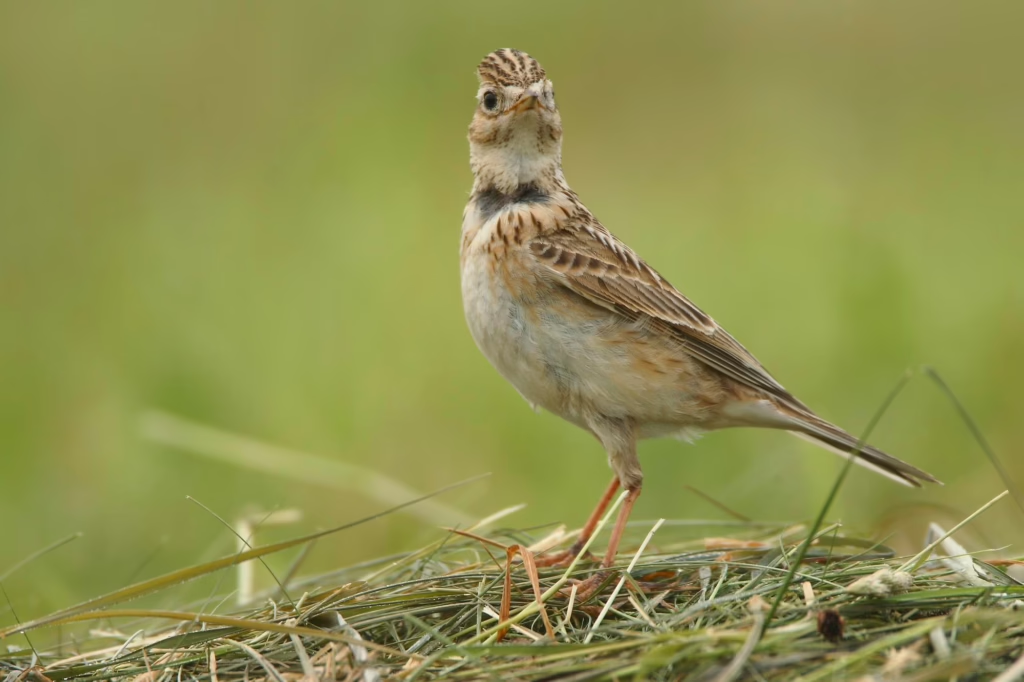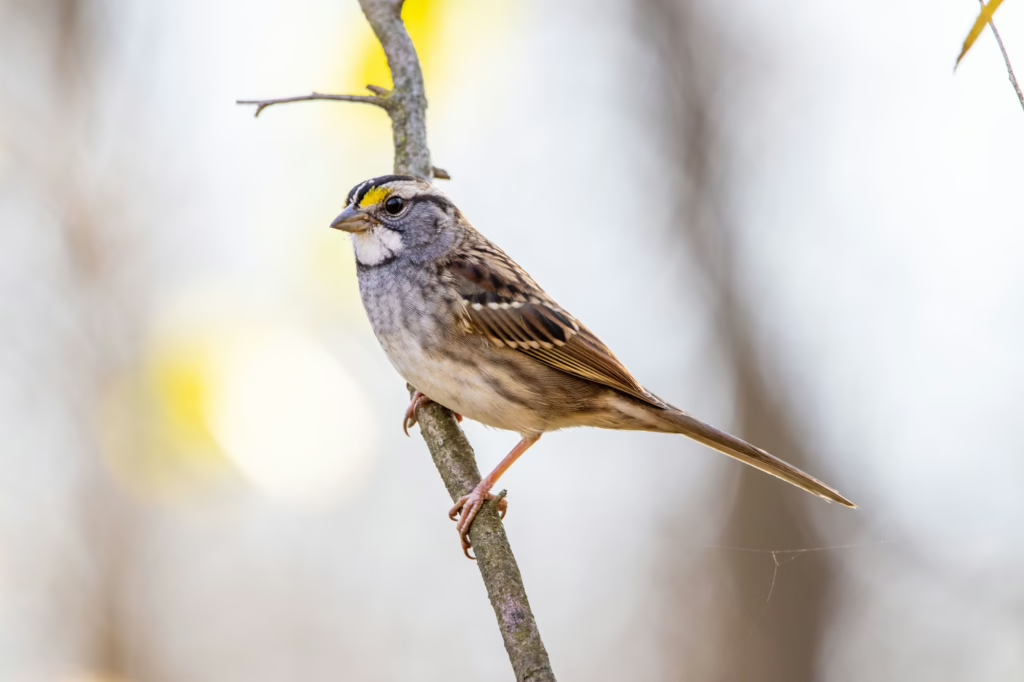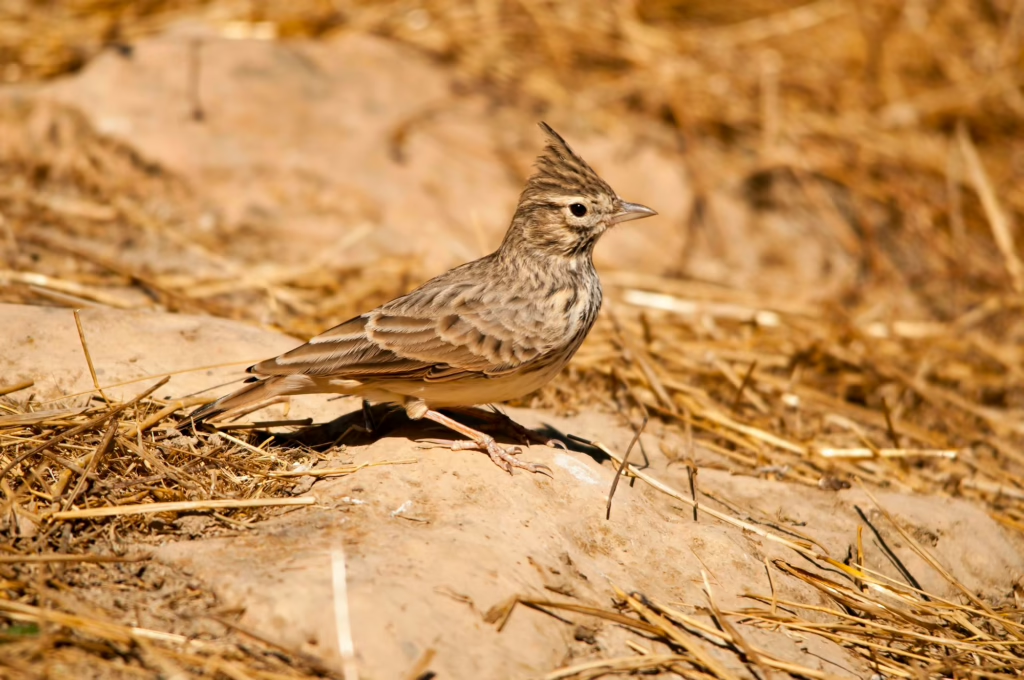Context and Background
William Wordsworth, one of the founders of English Romanticism, composed “To the Skylark” in 1825, during the later period of his poetic career. It was published in 1827 in the volume Poetical Works, and although it shares its title with Shelley’s more famous “To a Skylark” (1820), Wordsworth’s approach and poetic philosophy are markedly different. His poem belongs to the tradition of nature lyrics, yet it reflects his mature and deeply moral vision of nature—not just as a source of beauty or awe, but as a guide and ethical force.
The skylark—a small, singing bird known for its upward flight and melodious voice—had become a favorite image for Romantic poets, symbolizing freedom, transcendence, and poetic inspiration. While Shelley’s skylark is ethereal and divine, a “blithe spirit” soaring far above earthly existence, Wordsworth’s skylark is firmly rooted in the physical world and admired for its humility, cheerfulness, and steadfastness. Wordsworth does not celebrate the skylark for what it transcends but for what it embodies: a life of constancy, simplicity, and moral quietude.

Romanticism and Wordsworth’s Philosophy of Nature
In Wordsworth’s poetry, nature is not simply a picturesque backdrop or a poetic device; it is a living presence, an active teacher, and a source of moral truth. He believed that communion with nature could foster emotional and spiritual well-being, particularly when contrasted with the artificialities and corruptions of urban, industrial society.
The skylark, in this poem, becomes a symbol of this Romantic ideal. It does not strive for greatness or recognition—it sings from the heart, untroubled by the complexities of human ambition. This idea is consistent with Wordsworth’s lifelong interest in rustic simplicity, emotional sincerity, and inner contentment. The bird’s harmony with the natural world becomes a moral lesson for mankind: happiness lies not in striving or competition but in being at peace with one’s place in creation.
Comparison with Shelley’s Skylark
Although both poems are addressed to the same bird, Shelley and Wordsworth use the skylark for entirely different philosophical ends.
- Shelley’s skylark is an ecstatic, untouchable being, almost divine in nature, representing idealized beauty and pure inspiration. His poem is full of rapturous comparisons, metaphysical musings, and sensuous imagery.
- Wordsworth’s skylark, by contrast, is moral and modest. It is admired not because it surpasses the human condition, but because it exemplifies what humans ought to strive for—inner peace, constancy, and a grateful heart.
Wordsworth’s poem is thus less emotional, less abstract, and more grounded. Where Shelley seeks to learn how to escape human limitations, Wordsworth wants to embrace and purify the human experience through lessons found in nature.

Structure and Form
“To the Skylark” is a Petrarchan sonnet, composed of an octave (eight lines) and a sestet (six lines), with the traditional rhyme scheme of ABBA ABBA CDE CDE. This form is particularly suited to meditative and philosophical poetry.
- The octave typically presents a situation or subject—in this case, the poet’s admiration for the skylark and a description of its character.
- The sestet often provides a resolution, reflection, or deeper moral insight—in this poem, it articulates the poet’s desire to learn from the skylark and apply its qualities to his own life.
The controlled, reflective form supports the tone of quiet reverence, and contrasts with the soaring, free-flowing rhythm of Shelley’s ode. The sonnet’s calm symmetry mirrors the very order and contentment that the skylark represents.
Themes and Messages
a) Simplicity and Humility
The skylark lives a modest life, free of vanity and ambition. Yet its song brings joy to all who hear it. Wordsworth admires this balance—how something small and humble can create beauty without seeking reward.
b) Joy and Contentment in Duty
The bird sings, not for show, but because it is in its nature. Its joy is derived from doing what it was made to do. This resonates with Wordsworth’s belief that true happiness comes from fulfilling one’s natural role with sincerity and love.
c) Nature as Moral Teacher
Rather than viewing nature as a mysterious or overpowering force, Wordsworth treats it as a gentle and wise guide. The skylark teaches through example, living a life that humans might emulate.
d) Constancy and Cheerfulness
One of the skylark’s most admirable traits, according to Wordsworth, is its unwavering constancy—it remains joyful and faithful to its song, no matter the changes in weather or season. This constancy is a kind of spiritual strength.
Tone and Language
The tone of the poem is gentle, admiring, and deeply sincere. Wordsworth uses simple, clear language—true to his poetic principle of writing in “the real language of men”—but achieves emotional depth through carefully chosen words and quiet introspection.
There is no grandeur or excessive ornamentation. The imagery is soft and modest, reflecting the qualities of the skylark itself. The diction reinforces the poem’s central idea: that moral strength and beauty lie in modesty, cheerfulness, and purity.
Literary Importance
Though not as widely anthologized as Shelley’s To a Skylark, Wordsworth’s sonnet remains a significant example of Romantic nature poetry. It stands as a quiet counterpoint to the more ecstatic strains of Romanticism, offering a contemplative and moral perspective grounded in natural harmony and ethical admiration.
It also marks Wordsworth’s shift toward a more philosophical and inwardly reflective poetic voice in his later years. Rather than seeking inspiration from storms, mountains, or sublime terror, he turns to the common skylark, and finds in it a timeless model of how to live wisely and well.

Conclusion
William Wordsworth’s “To the Skylark” is a graceful and contemplative sonnet that celebrates the virtues of simplicity, humility, and contentment. The skylark, far from being a divine mystery, is cherished for its moral example—a symbol of how harmony with nature can lead to inner peace. Through restrained language and carefully shaped form, Wordsworth delivers a profound message: that the truest wisdom lies not in striving for greatness, but in living one’s natural life with joy, fidelity, and grace. This quiet lyric stands as a testament to Wordsworth’s enduring vision of nature as both companion and moral guide, making “To the Skylark” a gem of reflective Romantic poetry.

